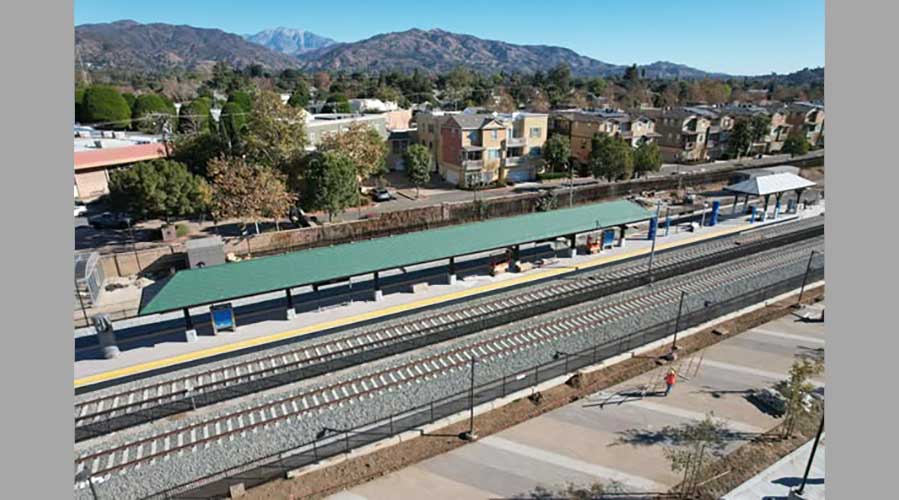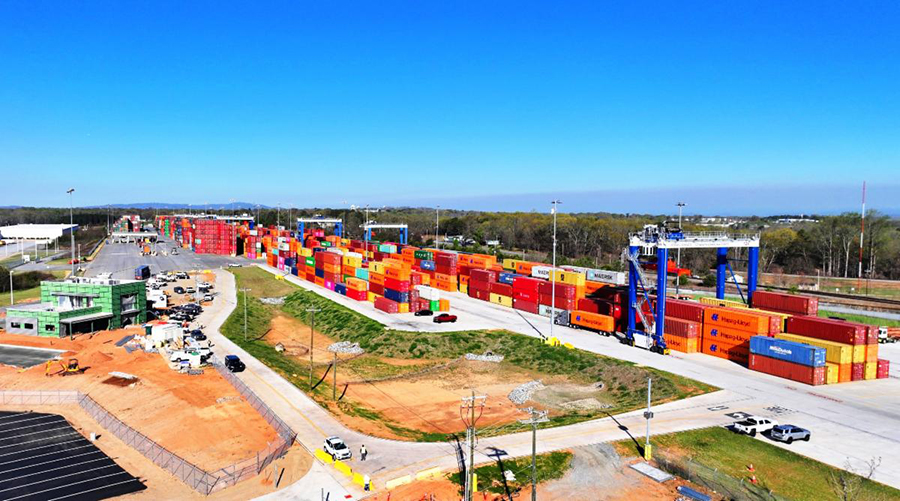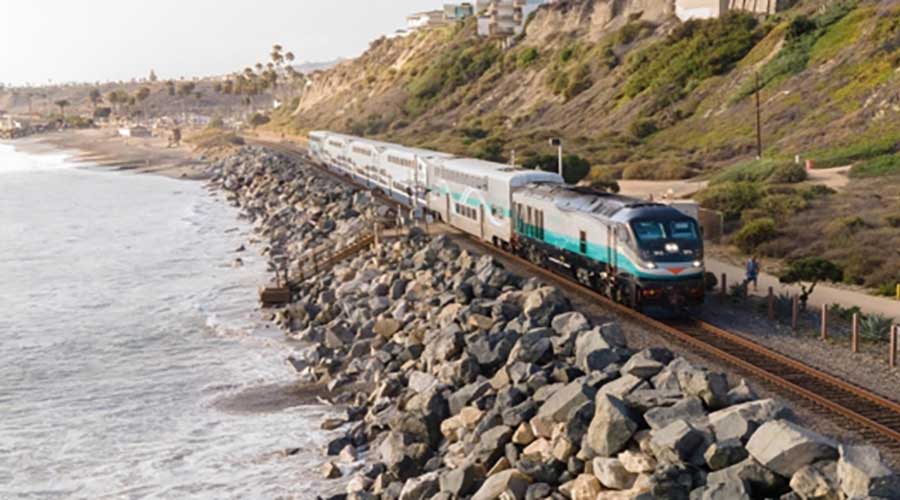Newsletter Sign Up
Stay updated on news, articles and information for the rail industry
Stay updated on news, articles and information for the rail industry
Rail News Home
Rail Industry Trends
Rail News: Rail Industry Trends
1/26/2011
Rail News: Rail Industry Trends
NS 'profitably grew the business' in 2010, Moorman says
advertisement
Late yesterday afternoon, Norfolk Southern Corp. reported its fourth-quarter financial results. Railway operating revenue increased 14 percent to $2.39 billion, income from railway operations rose 17 percent to $642 million, net income climbed 31 percent to $402 million, diluted earnings per share jumped 33 percent to $1.09 and the operating ratio improved 0.7 points to 73.2 compared with fourth-quarter 2009 results.
Analysts polled by FactSet Research Systems Inc. expected earnings of $1.05 per share and revenue of $2.42 billion. The results weren’t quite as strong as anticipated, “but nonetheless were strong on a year-over-year basis,” said Chairman, President and Chief Executive Officer Wick Moorman during the webcast and teleconference.
“We profitably grew the business, invested in the franchise and generated significant levels of cash,” he said.
Harsh weather during the quarter, especially in December, reduced revenue by $14 million, said Executive Vice President and Chief Marketing Officer Don Seale. Yet, coal revenue rose 18 percent to $685 million and volume increased 12 percent to 395,300 units primarily because of stronger metallurgical coal demand associated with new business and increased steel production, he said.
In addition, intermodal revenue climbed 16 percent to $471 million and volume rose 13 percent to 755,000 units as domestic traffic ballooned 22 percent, international traffic increased 4 percent and premium traffic jumped 14 percent. NS’ intermodal performance prompted FedEx to select the Class I as its preferred eastern rail carrier for a revamped domestic intermodal/truckload service the shipper plans to roll out soon, said Seale.
Meanwhile, merchandise revenue rose 10 percent to $1.2 billion and volume inched up 3 percent to 558,500 units primarily because of record agricultural product volume, especially fertilizers and corn, he said. Overall quarterly volume rose 9 percent to 1.7 million units largely because the railroad registered 2010 highs in the fourth quarter for agriculture, coal and intermodal traffic.
In terms of railway operating expenses, quarterly costs totaled $1.75 billion, up 12 percent vs. fourth-quarter 2009’s expenses. Compensation/benefit and fuel expenses accounted for 70 percent of the variance, said EVP of Finance and Chief Financial Officer James Squires. The average diesel price per gallon rose 24 percent year over year to $2.46, he said.
For the full year, NS reported railway operating revenue of $9.5 billion, up 19 percent; income from railway operations of $2.7 billion, up 36 percent; net income of $1.5 billion, up 45 percent; diluted earnings per share of $4, up 45 percent; and operating expenses of $6.8 billion, up 14 percent compared with 2009 results. In addition, the operating ratio improved 5 points to 71.9.
During the conference, EVP and Chief Information Officer Deborah Butler also reviewed NS’ proposed capital spending budget for 2011. The baseline budget of $1.74 billion is up 19 percent from 2010’s $1.47 billion budget, she said. In addition to baseline spending, the Class I is budgeting $334 million to purchase rail cars that currently are leased and $146 million for positive train control.
The baseline budget includes:
• $763 million for roadway projects — primarily rail, tie and ballast programs, and bridge/culvert replacements — representing 44 percent of the budget;
• $244 million for facilities and terminals;
• $212 million for locomotives, including the acquisition of 50 new units;
• $194 million for “other” projects;
• $155 million for freight cars, including the purchase of 1,500 coal cars;
• $96 million for technology upgrades; and
• $79 million for infrastructure work, such as coal and merchandise network improvements.
— Jeff Stagl
Analysts polled by FactSet Research Systems Inc. expected earnings of $1.05 per share and revenue of $2.42 billion. The results weren’t quite as strong as anticipated, “but nonetheless were strong on a year-over-year basis,” said Chairman, President and Chief Executive Officer Wick Moorman during the webcast and teleconference.
“We profitably grew the business, invested in the franchise and generated significant levels of cash,” he said.
Harsh weather during the quarter, especially in December, reduced revenue by $14 million, said Executive Vice President and Chief Marketing Officer Don Seale. Yet, coal revenue rose 18 percent to $685 million and volume increased 12 percent to 395,300 units primarily because of stronger metallurgical coal demand associated with new business and increased steel production, he said.
In addition, intermodal revenue climbed 16 percent to $471 million and volume rose 13 percent to 755,000 units as domestic traffic ballooned 22 percent, international traffic increased 4 percent and premium traffic jumped 14 percent. NS’ intermodal performance prompted FedEx to select the Class I as its preferred eastern rail carrier for a revamped domestic intermodal/truckload service the shipper plans to roll out soon, said Seale.
Meanwhile, merchandise revenue rose 10 percent to $1.2 billion and volume inched up 3 percent to 558,500 units primarily because of record agricultural product volume, especially fertilizers and corn, he said. Overall quarterly volume rose 9 percent to 1.7 million units largely because the railroad registered 2010 highs in the fourth quarter for agriculture, coal and intermodal traffic.
In terms of railway operating expenses, quarterly costs totaled $1.75 billion, up 12 percent vs. fourth-quarter 2009’s expenses. Compensation/benefit and fuel expenses accounted for 70 percent of the variance, said EVP of Finance and Chief Financial Officer James Squires. The average diesel price per gallon rose 24 percent year over year to $2.46, he said.
For the full year, NS reported railway operating revenue of $9.5 billion, up 19 percent; income from railway operations of $2.7 billion, up 36 percent; net income of $1.5 billion, up 45 percent; diluted earnings per share of $4, up 45 percent; and operating expenses of $6.8 billion, up 14 percent compared with 2009 results. In addition, the operating ratio improved 5 points to 71.9.
During the conference, EVP and Chief Information Officer Deborah Butler also reviewed NS’ proposed capital spending budget for 2011. The baseline budget of $1.74 billion is up 19 percent from 2010’s $1.47 billion budget, she said. In addition to baseline spending, the Class I is budgeting $334 million to purchase rail cars that currently are leased and $146 million for positive train control.
The baseline budget includes:
• $763 million for roadway projects — primarily rail, tie and ballast programs, and bridge/culvert replacements — representing 44 percent of the budget;
• $244 million for facilities and terminals;
• $212 million for locomotives, including the acquisition of 50 new units;
• $194 million for “other” projects;
• $155 million for freight cars, including the purchase of 1,500 coal cars;
• $96 million for technology upgrades; and
• $79 million for infrastructure work, such as coal and merchandise network improvements.
— Jeff Stagl


 LRW Honors Amtrak’s Acheson As Railway Woman Of The Year
LRW Honors Amtrak’s Acheson As Railway Woman Of The Year
 From Editor-In-Chief Foran: Of Gender Equity And Inclusion
From Editor-In-Chief Foran: Of Gender Equity And Inclusion
 Spotlight On Some Of Today’s Rail Safety Products
Spotlight On Some Of Today’s Rail Safety Products
 Women of Influence in Rail eBook
Women of Influence in Rail eBook
 railPrime
railPrime







